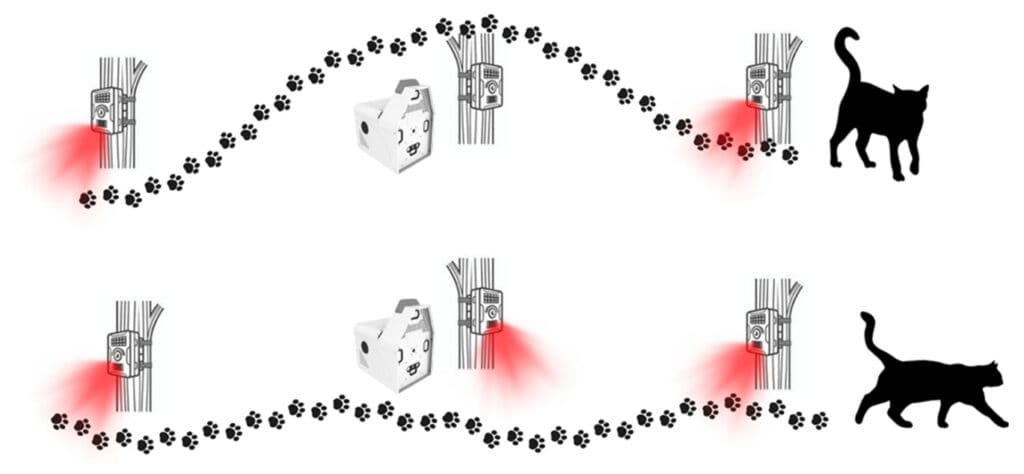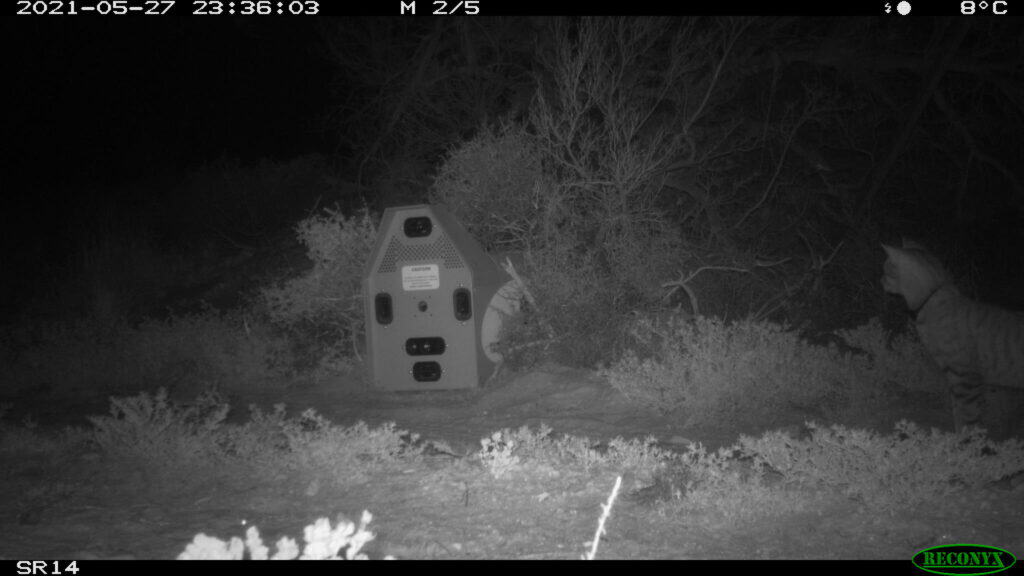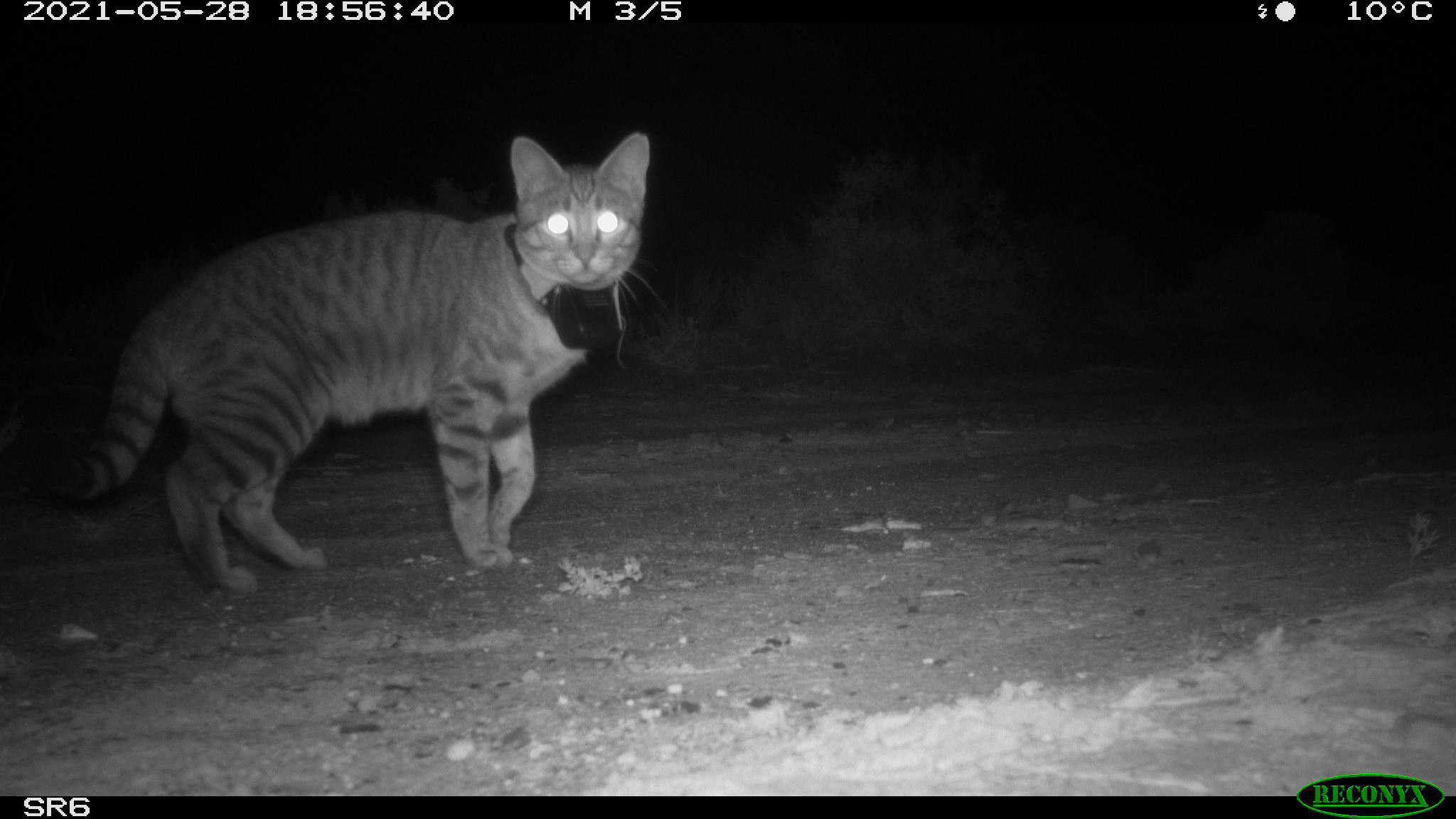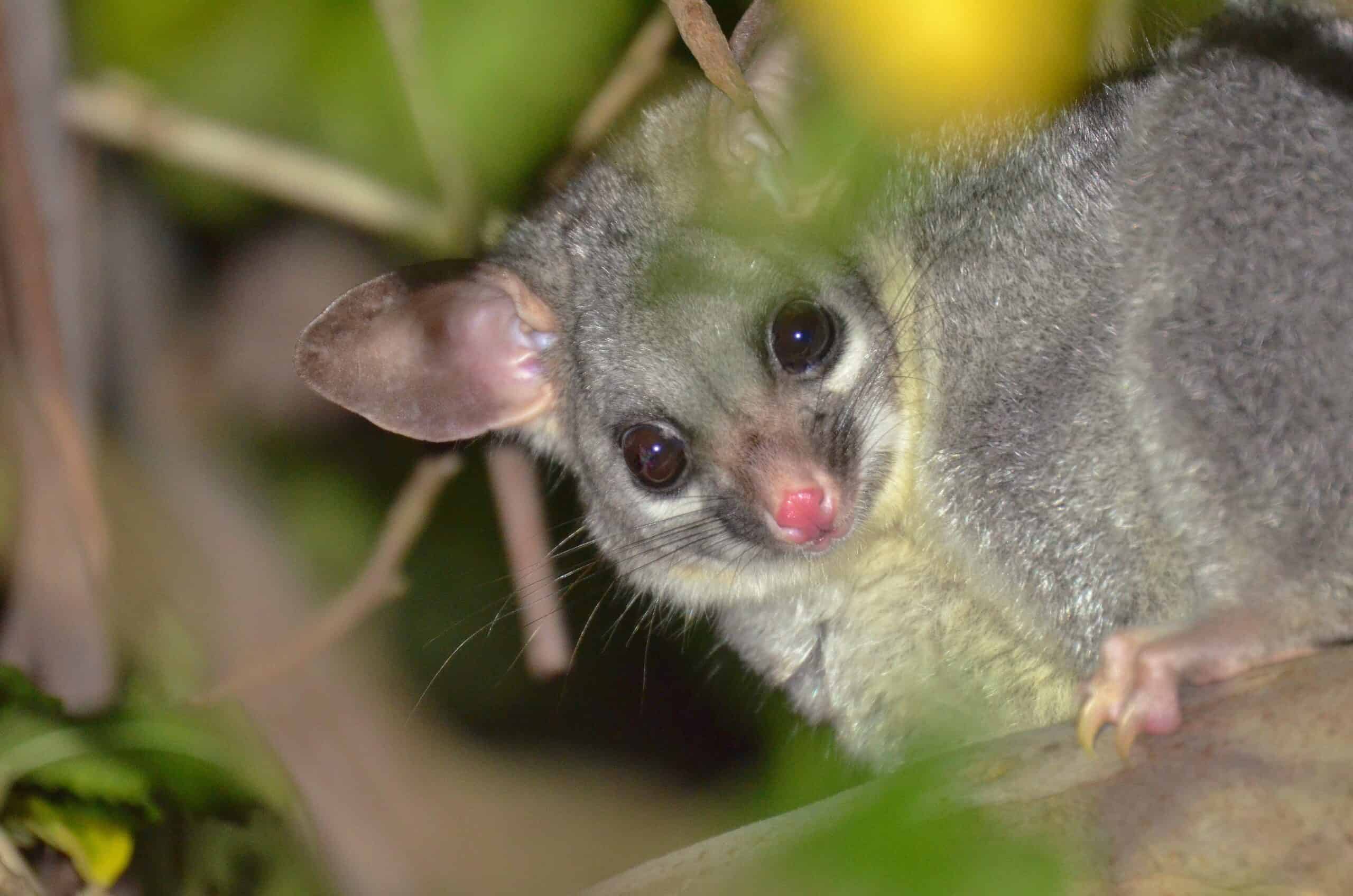Share this article
Wildlife Featured in this article
- Feral cat
- Greater bilby
- Mitchell’s hopping mouse
WSB: Overcoming cats’ phobias can help save other wildlife
Neophobia—the fear of new things—keeps felines away from control devices in Australia
When faced with new—potentially threatening—things, cats usually want to run and hide. That’s a problem for wildlife managers in Australia that want to introduce a new special cat-killing device to save populations of small native wildlife from extinction.
But researchers are revealing ways to get around cats’ weariness for new things.
“Cats essentially alter their behavior as a result of their perceived environmental risk,” said Ned Ryan-Schofield, an ecologist with Bush Heritage, a nonprofit land conservation organization in Australia. “If you chase a cat around, it’s not just going to be wary of you. It’s going to be wary of everything because it perceives its environment as more dangerous.”
As they do in much of the world, feral cats (Felis catus) have devastated native wildlife populations in Australia. Some research estimates they kill more than 1.5 billion mammals each year in the country. In Venus Bay Conservation Park, cats prey on species like greater bilbies (Macrotis lagotis), considered vulnerable in Australia, and Mitchell’s hopping mice (Notomys mitchellii).
To help control the cat populations, Ryan-Schofield’s colleague, John Read, helped develop a device called the Felixer. A box about the size of a large beer cooler, the device is equipped with cameras and lasers connected to an artificial intelligence program trained to recognize cats. When a cat passes close enough to the box and is confirmed to be a cat, the device spits out a glob of gel that’s poisonous only to cats and sticks to their hair. As cats do, they try to clean the muck off their fur by licking it, thereby ingesting the gel and dying within a few hours.
Researchers have proven the devices to be successful in Australia, as detailed in a “Field Note” in the July/August 2019 issue of The Wildlife Professional.
So, when Ryan-Schoefield and his colleagues wanted to control a few invasive cats known to live in Venus Bay, they turned to the Felixer.
Wise cats
The trouble was the cats were far too wary in this area. Wildlife managers had already tried cage trapping, leghold trapping, spotlight and thermal shooting to control the population, so the cats were cautious.
The researchers deployed 10 Felixers in a 10-square-kilometer area with only two known cats, but they didn’t catch them over three months. Cameras placed nearby the devices showed the cats walking straight down the path where the devices were placed. But once the novel equipment came into their view, the cats took a detour to avoid the devices and met back up on the path at a safe distance away from them.
In a study published recently in the Wildlife Society Bulletin, Ryan-Schofield, Read and their colleagues wanted to test how long neophobia—the fear of new things—lasts in cats. They went to Arid Recovery, a fenced reserve in south-central Australia, and set up an experiment using Felixers, cats and cameras. For the sake of the experiment, they didn’t put the poisonous gel in the Felixers.

The team placed the devices next to a fence—cats typically patrol the fence lines in Arid Recovery in search of smaller mammals. “They hop through the fence, and the cats just pounce on them,” Ryan-Schofield said.
The setup involved cameras on either side of the Felixer and one right in the middle, to see if cats avoided them. The researchers also put GPS tracking collars on the free-range cats they were studying.
Overcoming fear
They found that the cats eventually overcame their fear of the unfamiliar objects—their likelihood of avoiding them declined every day. Even naïve cats that hadn’t been hassled much before they were released in this area still avoided the Felixers 20% of the time.
Those that had been hassled by other management tactics were warier of the unfamiliar objects. “It took a lot longer for the neophobia to wane than we thought it was going to,” Ryan-Schofield said. “Cats are wary of new things.”
Ryan-Schofield said he thinks neophobia probably applies fairly widely to a number of potential cat control techniques that wildlife managers use. But he also noted that neophobia is likely cumulative. In Australia, for example, Felixers can be very effective, but are one of the more expensive techniques for cat control. As a result, some people use them as a last resort. But the other techniques, which include things like cage traps and leghold traps, are likely to increase cats’ neophobia, which in turn, makes the Felixers less effective.
“They are probably pretty wired,” he said. But eventually the felines will get over their fear. “Just give it time.”

Wider implications
Wildlife managers also need to consider the impact of failed control efforts, Ryan-Schofield said. “Everyone knows that capturing and handling animals has impacts, but you have to actually make the effort to quantify those impacts,” he said.
With this in mind, the researchers took their Felixers back to Venus Bay after the initial trial was over and eventually caught a cat. But Ryan-Schofield noted that this may have been due to the fact that he concealed this one extremely well inside a bush, leaving only a tunnel through which the lasers and gel could shoot out.
This article features research that was published in a TWS peer-reviewed journal. Individual online access to all TWS journal articles is a benefit of membership. Join TWS now to read the latest in wildlife research.
Header Image: A cat stops to check out a Felixer cat control device. Credit: Ned Ryan-Schofield







